2023 marks the 85th anniversary of Jerry Siegel and artist Joe Shuster’s iconic creation: Superman. Since his debut in Action Comics #1 In 1938, Superman has become one of the most prominent superheroes in the world and he is arguably the archetype for everyone that came after him. That’s one of the reasons why Superman has been adapted multiple times in live-action films and television shows. However, the animated medium has often proven to be one of the best ways to bring Superman to life.
This week, Superman is getting his first solo animated series in 27 years with the arrival of Adult Swim’s newest show, My Adventures with Superman. And while it’s been far too long since Superman has had this kind of spotlight, he’s never been absent from the small screen in animated form for an extended period. To mark the arrival of My Adventures with Superman, we’re taking a look back at the many different shows to feature the Man of Steel in both a leading role or in supporting and guest appearances.
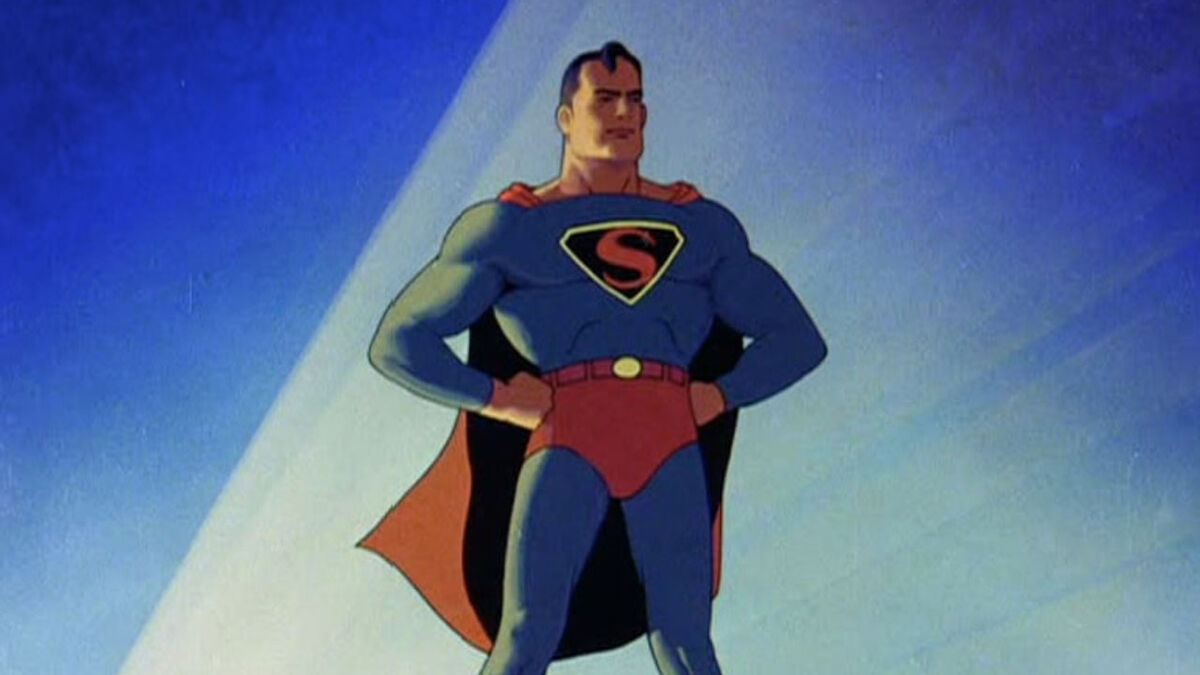
Technically, the Fleischer Superman cartoons debuted on the big screen in 1941, as shorts that would play before feature films, but they not only proved to be incredibly influential on all future portrayals of the Man of Steel, they also came to television in the 1950s, where they would continue to air many times in various programing blocks. And since there are 17 shorts/episodes, it could easily be considered a Superman animated series, so we’re cheating a bit, but Fleischer’s Superman at least deserves an honorable mention.
Max and David Fleischer’s depiction of Superman captured the imagination of the general public just a few years after his first appearance in the comics. And the Flesichers wisely hired Bud Collyer and Joan Alexander, the stars of the radio show, The Adventures of Superman, to reprise their respective roles as Superman/Clark Kent and Lois Lane.
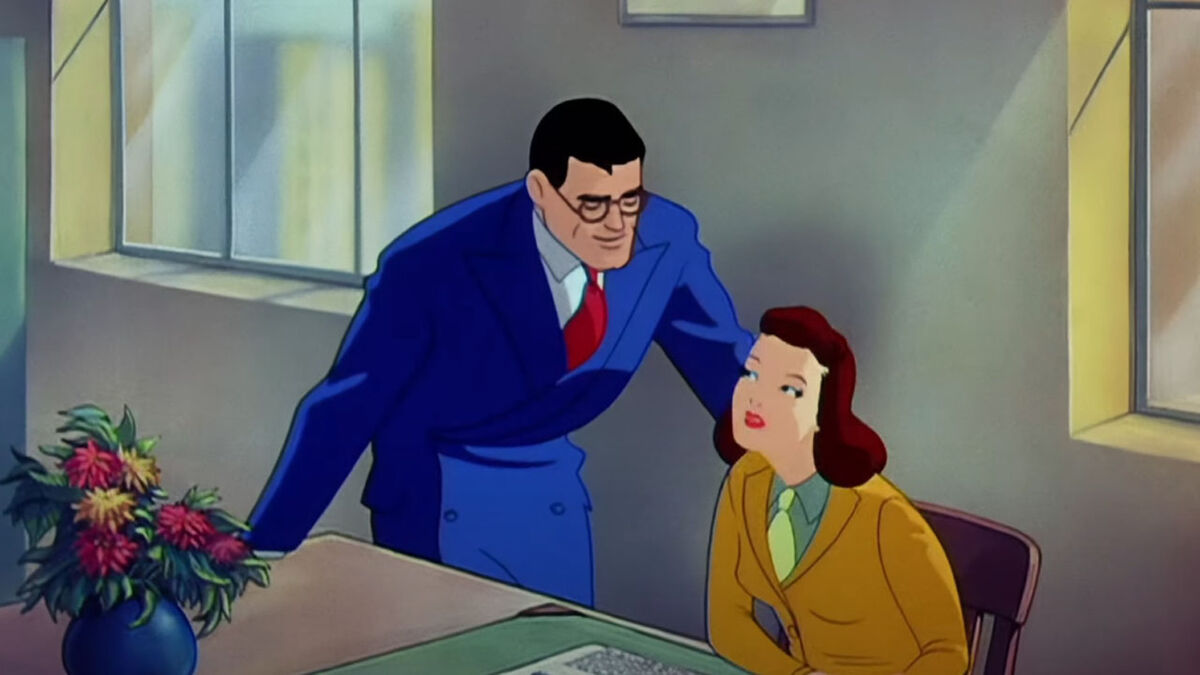
While these shorts weren’t the first time that Superman flew, the Fleischers did get permission from DC’s predecessor, National Publishing, to change his powers so that he could always fly. They also came up with the opening line that has stayed with Superman for decades: “Faster than a speeding bullet! More powerful than a locomotive! Able to leap tall buildings in a single bound!”
Because of the Fleischer brothers’ financial issues with Paramount and their personal issues with each other, they were forced out of their own studio after they finished the first nine Superman shorts. Paramount reorganized the company as Famous Studios in 1942, and finished eight more Superman shorts. Unfortunately for Paramount, the studio let the rights to these Superman cartoons slip into the public domain. However, Warner Bros. subsequently acquired the original film materials and recently released the Fleischer Superman shorts on Blu-ray.
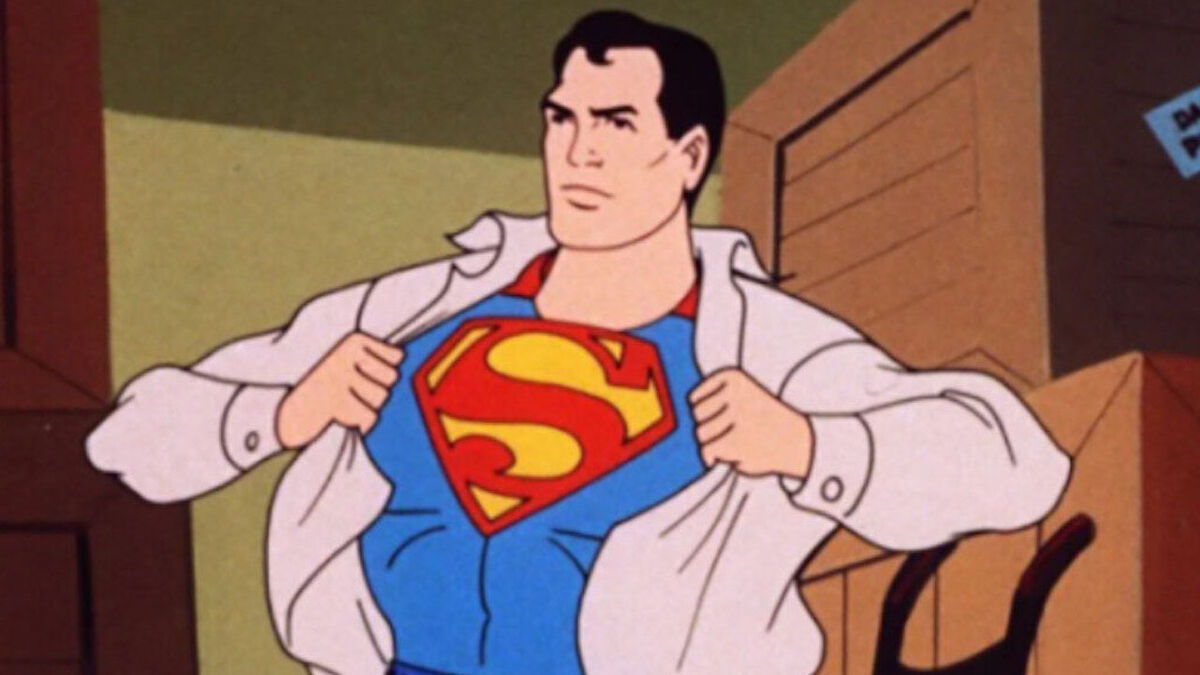
Filmation gave Superman his first true animated television series in 1966 with the premiere of The New Adventures of Superman. This was a key moment in Superman’s animated history because unlike the Fleischer shorts, Filmation had a full lineup of comic book villains to play with including Lex Luthor, Brainiac,Toyman, Prankster, Titano, and Mister Mxyzptlk. Additionally, Filmation looked to The Adventures of Superman radio show when casting this series. That’s why Collyer and Alexander were once again cast as Superman and Lois, while radio stars Jackson Beck and Jack Grimes reprised their roles as Perry White and Jimmy Olsen. In between short Superman segments, there were also shorts from The Adventures of Superboy, with Bob Hastings as Superboy/Clark Kent and Janet Waldo as Lana Lang.
In Season 2, Superman had to share the spotlight in The Superman/Aquaman Hour of Adventure. In addition to separate Superman, Superboy, and Aquaman stories, there were also shorts with The Flash, Green Lantern, Hawkman, the Atom, Teen Titans, and the Justice League of America. Prior to Season 2, Alexander left the series, and Julie Bennett took over the role of Lois Lane.
The third and final season arrived in 1968 with a new title and a new co-star: The Batman/Superman Hour. As the name implies, Batman, Robin, and Batgirl were the new additions to the show, starring in their own adventures. But the big change for Superman was that instead of single segments, each episode featured two-part Superman stories that bookended the Batman-related segments.
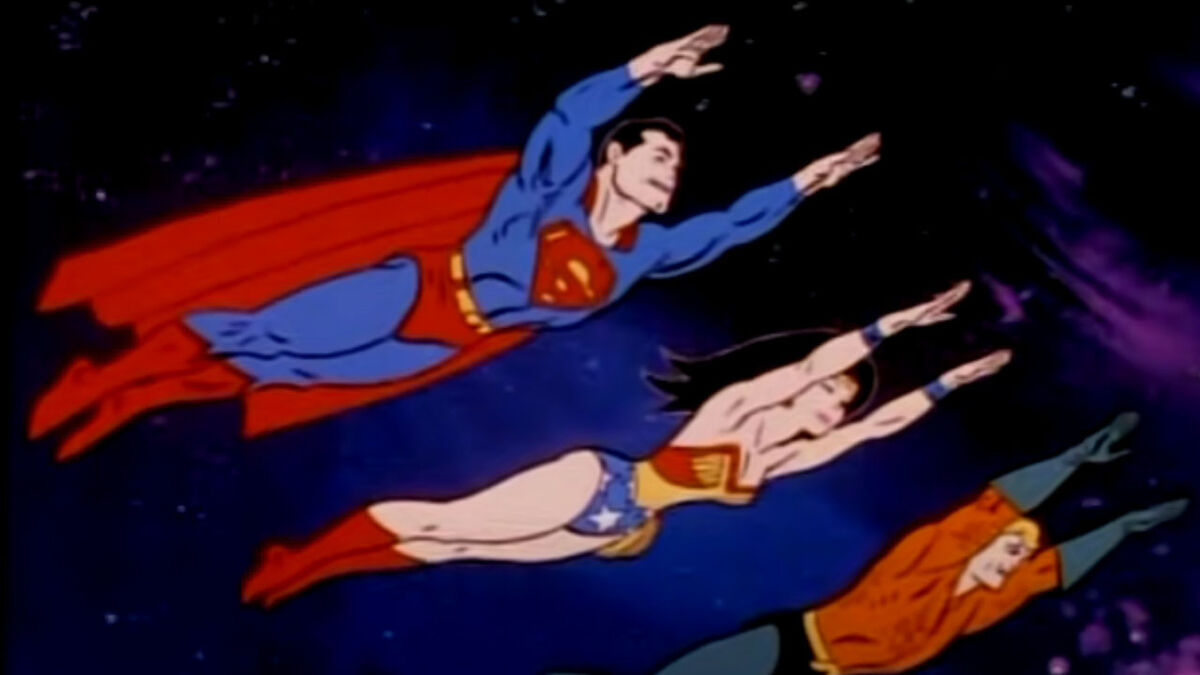
Superman was absent from the animated realm for four years before Hanna-Barbera ushered in the next phase of DC cartoons in 1973 with the debut of Super Friends. This very child-friendly take on DC’s heroes reimagined the Justice League as the Super Friends, complete with kid sidekicks Wendy Harris (Sherri Alberoni), Marvin White (Frank Welker), and Wonder Dog (Welker). As for Superman, he was voiced by Danny Dark, a role he would retain through the six subsequent Super Friends-related series until the franchise ended in 1986.
There was another four-year gap between the end of the first incarnation of Super Friends and the arrival of the follow up series in 1977, The All-New Super Friends Hour. This time, Superman, Wonder Woman (Shannon Farnon), Batman (Olan Soule), Robin (Casey Kasem), and Aquaman (Norman Alden) were joined by a new trio of kid sidekicks: Zan (Michael Bell) and Jayna (Liberty Williams), the Wonder Twins, and their space monkey, Gleek (Bell)

The third series, Challenge of the Superfriends, is perhaps the most famous of the Super Friends shows because it introduced the Justice League’s counterpart team: The Legion of Doom. As led by Lex Luthor, the Legion included some of DC’s most iconic villains including Brainiac, Riddler, Bizarro, Black Manta, Scarecrow, Sinestro, Cheetah, Solomon Grundy, Captain Cold, Gorilla Grodd, Toyman, and Giganta. This series also gave the Legion their famous Hall of Doom, which looks a lot like Darth Vader’s helmet.
Regardless of the Legion of Doom’s endless potential for stories, those villains were largely absent from the fourth series, The World’s Greatest SuperFriends. Instead, Superman and his team had new bad guys to fight. The Legion returned in the fifth series, which went back to the basic title Super Friends and had a three-season run. The final two series, Super Friends: The Legendary Super Powers Show and The Super Powers Team: Galactic Guardians, both took their inspiration from Kenner’s Super Powers toyline, and introduced Darkseid (Welker) and several of Jack Kirby’s New Gods. And while the cancellation of Galactic Guardians marked the end of the Super Friends era, Superman would return to TV only two years later.

The 1988 Superman animated series may be the most obscure show to feature the Last Son of Krypton for some, because it only ran for a single season and it hasn’t been readily available to stream. However, it was released on DVD by Warner Bros., and you can buy it from some digital outlets. Ruby-Spears Productions produced the series, which was inspired both by the Christopher Reeve-led Superman movies and John Byrne’s 1986 comic book reboot, Man of Steel, which modernized Clark Kent and most of his supporting cast. One of the key changes from previous animated versions was Lex Luthor (Michael Bell) was more of a businessman instead of a typical supervillain, even though he was still Superman’s primary nemesis.
For this series, Beau Weaver stepped into the dual roles of Clark Kent and Superman, alongside Ginny McSwain as Lois Lane, Mark Taylor as Jimmy Olsen, Stanley Ralph Ross as Perry White, Tress MacNeille as Martha Kent, and Alan Oppenheimer as Jonathan Kent.
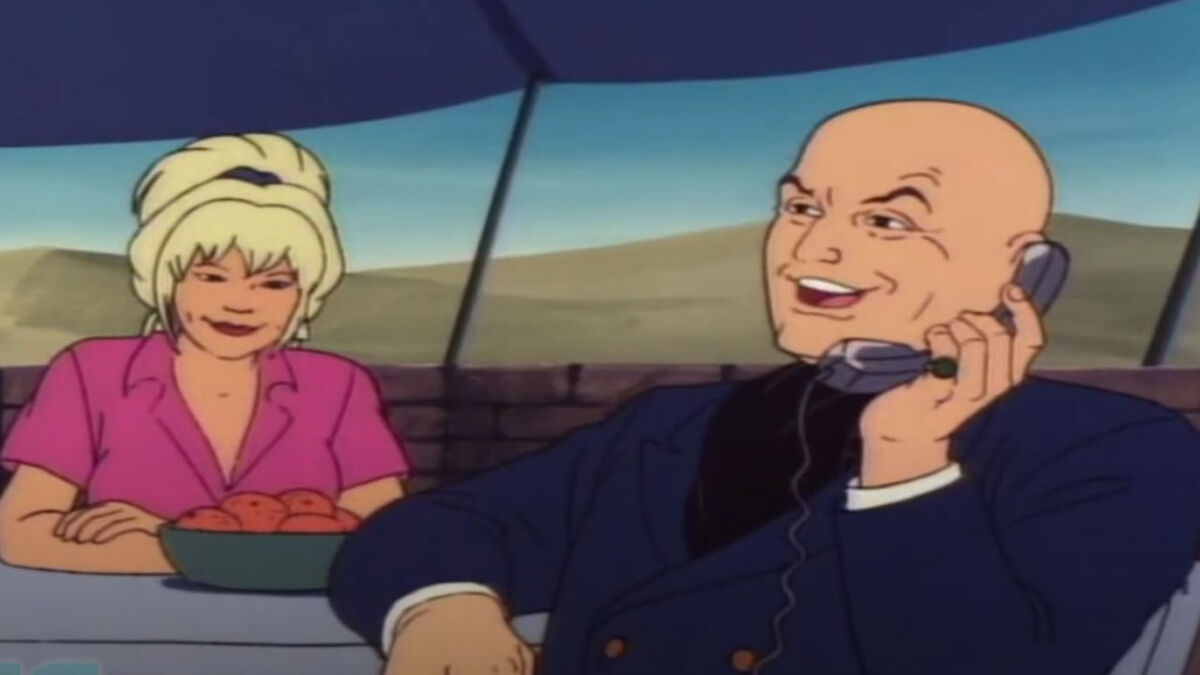
The opening sequence for the series notably used John Williams’ iconic “Superman March” from Superman, the only animated version of the Man of Steel to receive that honor. It also reused the “faster than a speeding bullet” intro from the Fleischer Superman cartoons, which had been cemented in the minds of multiple generations thanks to reruns of the 1950s live-action George Reeves Superman TV series, which also made use of those memorable words.
Each of the 13 episodes ended with a short from the “Superman Family Album,” which put forth the idea that Clark had his superpowers since he was a baby. This occasionally led to some very hard to explain moments for the Kents, and even for young Clark (Lynne Marie Stewart) himself.
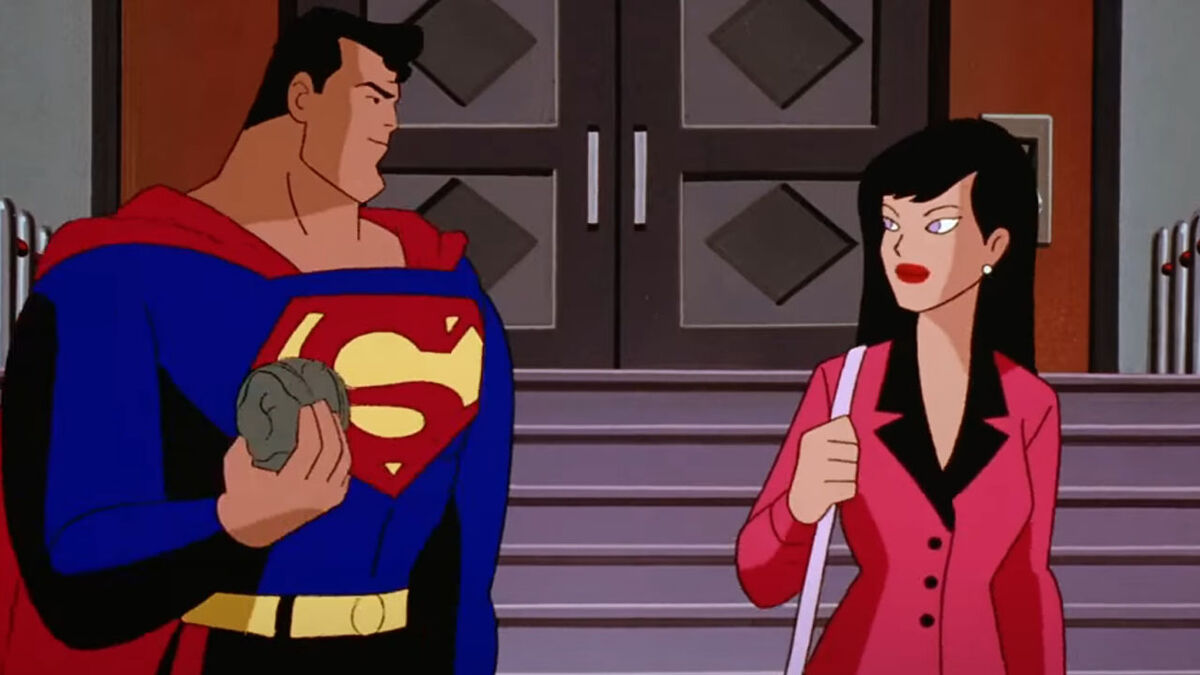
Following the success of Batman: The Animated Series, Bruce Timm, Alan Burnett, and Paul Dini expanded their DC Animated Universe with Superman: The Animated Series on Kids WB. Essentially, the Batman team took a similar approach to adapting the Man of Steel and his supporting cast. The result was perhaps the greatest animated depiction of Superman to date.
Superman: The Animated Series borrowed aspects from multiple eras of Superman comics and several of the previous adaptations. Tim Daly led the cast as Clark Kent, Superman, and even Bizarro on occasion, with Dana Delany as Lois Lane, David Kaufman as Jimmy Olsen, George Dzundza as Perry White, and Clancy Brown as Lex Luthor. In keeping with Byrne’s Man of Steel, Clark’s adoptive parents, Jonathan (Mike Farrell) and Martha Kent (Shelley Fabares), were still alive and a constant presence in his life.
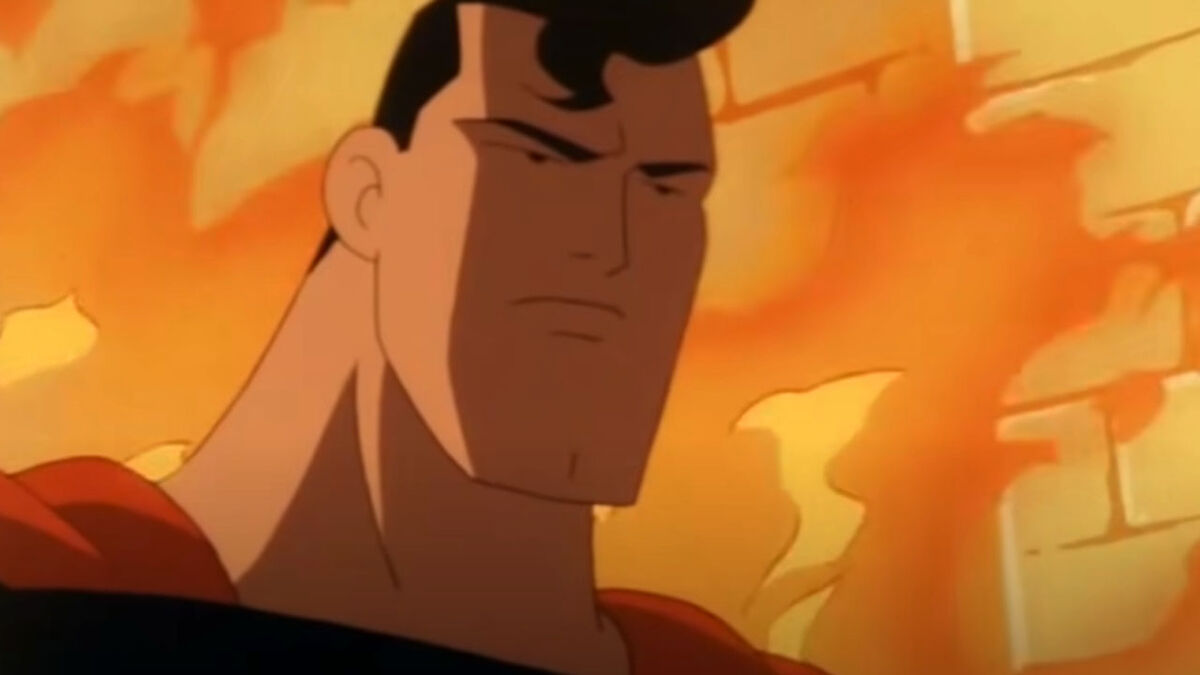
Additionally, the series embraced long-term storylines centered around Darkseid (Michael Ironside) and the evil New Gods of Apokolips. Jack Kirby, the creator of Darkseid, the New Gods, and the Fourth World, was given a visual nod in the series as the likeness for another one of his creations, Dan Turpin (Joseph Bologna), one of Superman’s closest allies in the Metropolis Police Department’s Special Crimes Unit. Turpin’s death at Darkseid’s hands in “Apokolips… Now!, Part 2” was also a shocking moment for the series that allowed the creative team to pay tribute to Kirby, who had died four years earlier in 1994.
The series concluded with the ultimate one-on-one battle between Superman and Darkseid that left the Man of Steel with a bitter taste in his mouth. Superman managed to defeat and humble Darkseid on Apokolips, but Darkseid had shaken the world’s trust in Superman by brainwashing him into leading an invasion of Earth in Darkseid’s name.
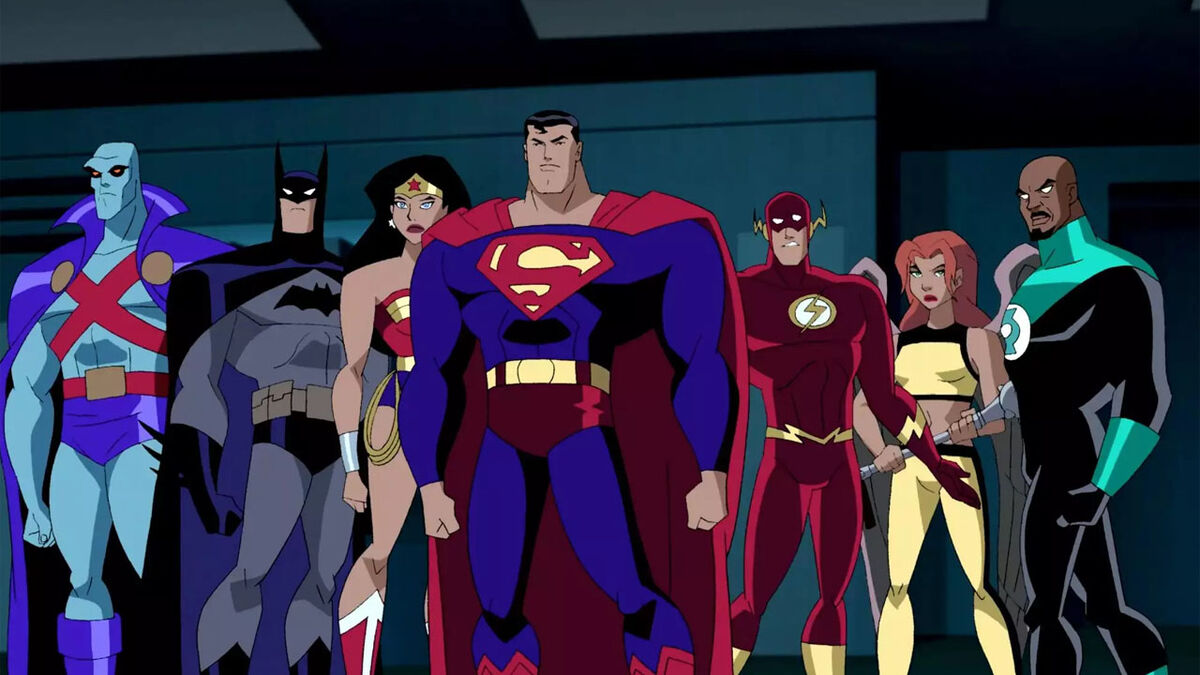
Although Batman: The Animated Series was the official start of the DCAU, Superman: The Animated Series laid the foundation for the shows that came later. Daly’s Superman met Kevin Conroy’s Batman in the three-part “World’s Finest” crossover, as well as a few additional one-off adventures. Superman also featured episodes that introduced the Flash, Aquaman, and the Green Lantern Corps. But before a Justice League series became a reality, a two-part episode from Batman Beyond Season 3 introduced a much older Superman (Christopher McDonald) and a future incarnation of the League.
In November 2001, Justice League premiered on Cartoon Network with Conroy reprising his role as Batman. However, George Newbern took over the role of Superman from Daly. The rest of the cast was rounded out by Susan Eisenberg as Wonder Woman, Phil LaMarr as John Stewart/Green Lantern, Michael Rosenbaum as Wally West/The Flash, Maria Canals-Barrera as Hawkgirl, and Carl Lumbly as the Martian Manhunter, J’onn J’onzz.
Justice League didn’t initially follow up on the lingering threads of Superman: The Animated Series, it did give Superman a rematch with both Darkseid and Brianiac (Corey Burton). But it was the follow-up series, Justice League Unlimited, that fully explored the fallout from Superman’s manipulation at Darkseid’s hands, as one of his closest allies from the previous series, Professor Emil Hamilton (Robert Foxworth), joined Project Cadmus and helped them clone Supergirl (Nicholle Tom) to take down the Justice League.
The final two episodes of Justice League Unlimited brought Darkseid back with the combined might of himself and Brainiac. Thus Superman had one last epic battle with his nemesis, before his life was saved by the timely intervention of none other than Lex Luthor.
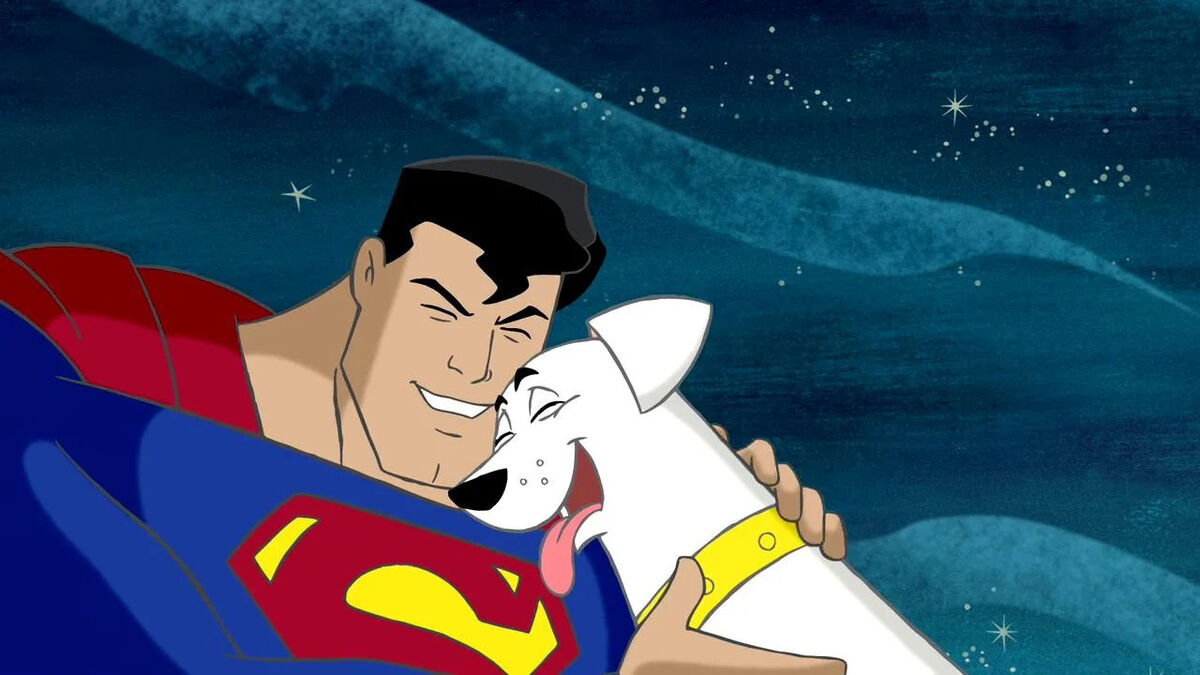
Following the conclusion of Justice League Unlimited in 2006, Superman was largely relegated to guest-starring or supporting roles in other series in the years that followed. Michael Daingerfield appeared as Superman in only a single episode of Krypto the Superdog, a series that featured Samuel Vincent as the voice of Superman’s superpowered dog. During the events of this show, Krypto lived with a kid named Kevin Whitney (Alberto Ghisi), and he teamed up with Streaky the Supercat (Brian Drummond) and Ace the Bat-Hound (Scott McNeil) to fight crime.
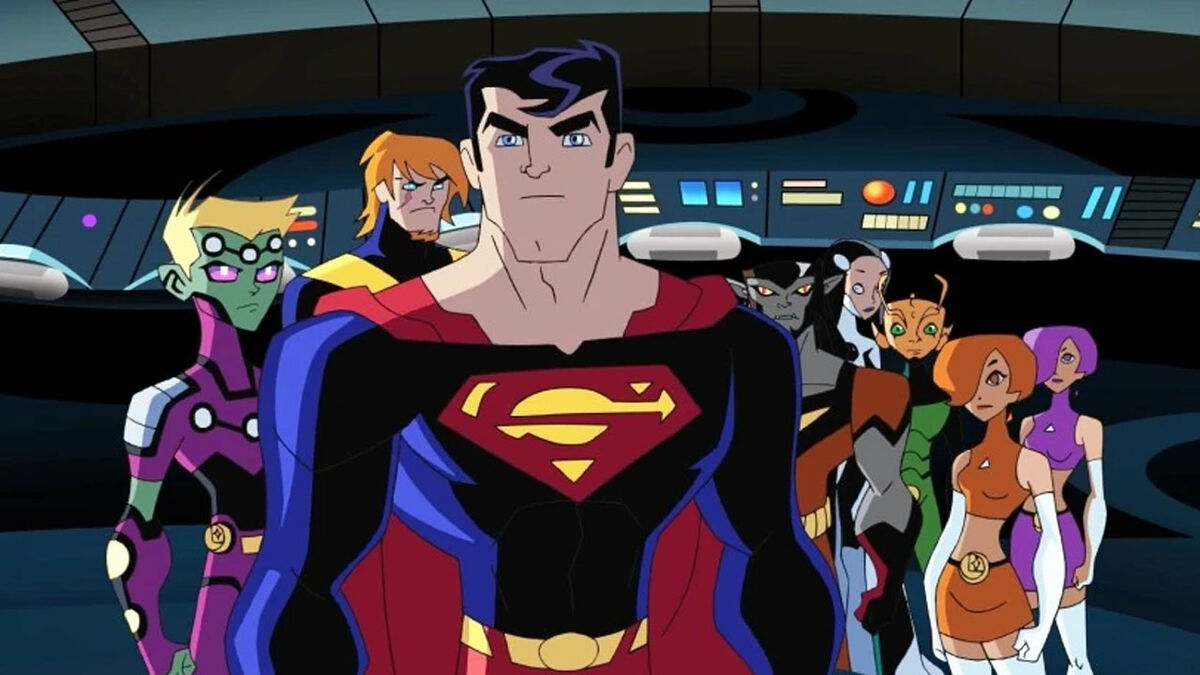
More prominently, Yuri Lowenthal, who famously voices Spider-Man for Sony’s wall-crawling video game franchise, provided the voice of young Superman in the Legion of Super Heroes animated series alongside Lightning Lad (Andy Milder), Saturn Girl (Kari Wahlgren), Brainiac 5 (Adam Wylie), Phantom Girl (Heather Hogan), Bouncing Boy (Michael Cornacchia), Triplicate Girl (Wahlgren), Timber Wolf (Shawn Harrison), and Chameleon Boy (Alexander Polinsky). For this series, young Superman was brought to the future to learn more about being a hero alongside his new teammates.

George Newbern reprised his role as Superman in a pair of two-part episodes in The Batman, which was completely separate from the DC Animated Universe continuity. Nolan North took over the role of Superman for Young Justice, a series that focuses on several ex-sidekicks as they become the next generation of the Justice League. In the first season, Superman was wary of his young clone, Superboy/Conner Kent (also voiced by North). But over time, Superman accepted Conner into his family as an adoptive brother.
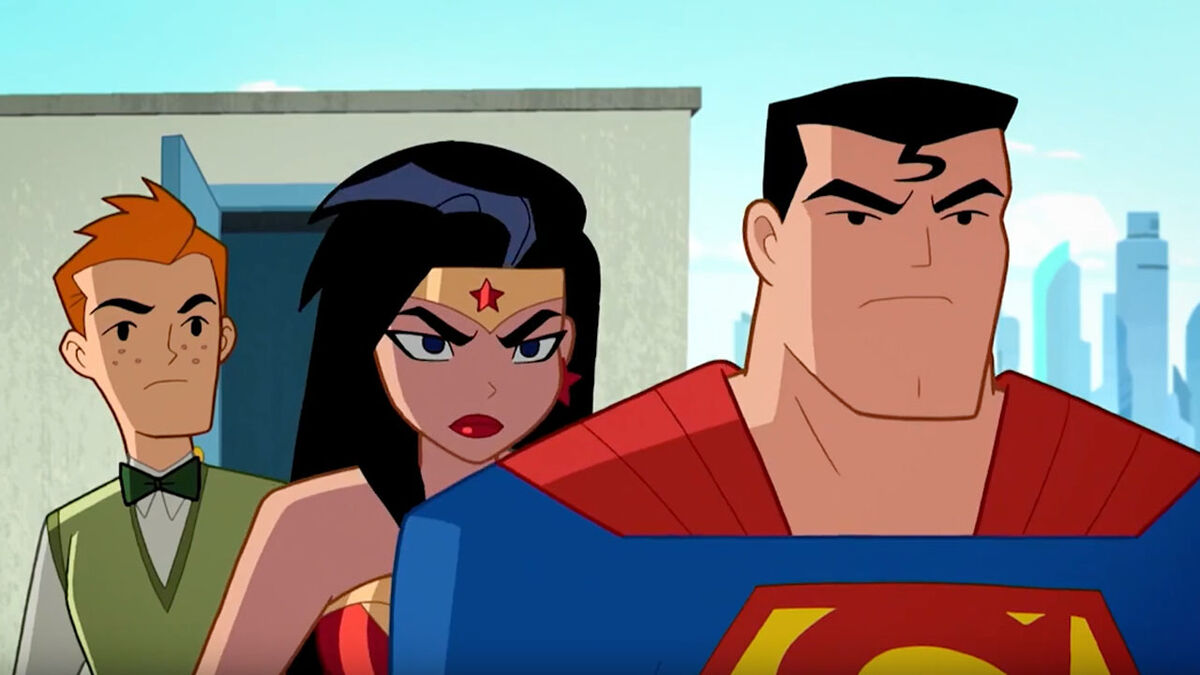
Jason J. Lewis was cast as the voice of Superman for Justice League Action, an animated series that skewed far younger than Justice League or Justice League Unlimited. This show also had a greater emphasis on action over story. But Justice League Action only had a single season run on Cartoon Network and it was not renewed.
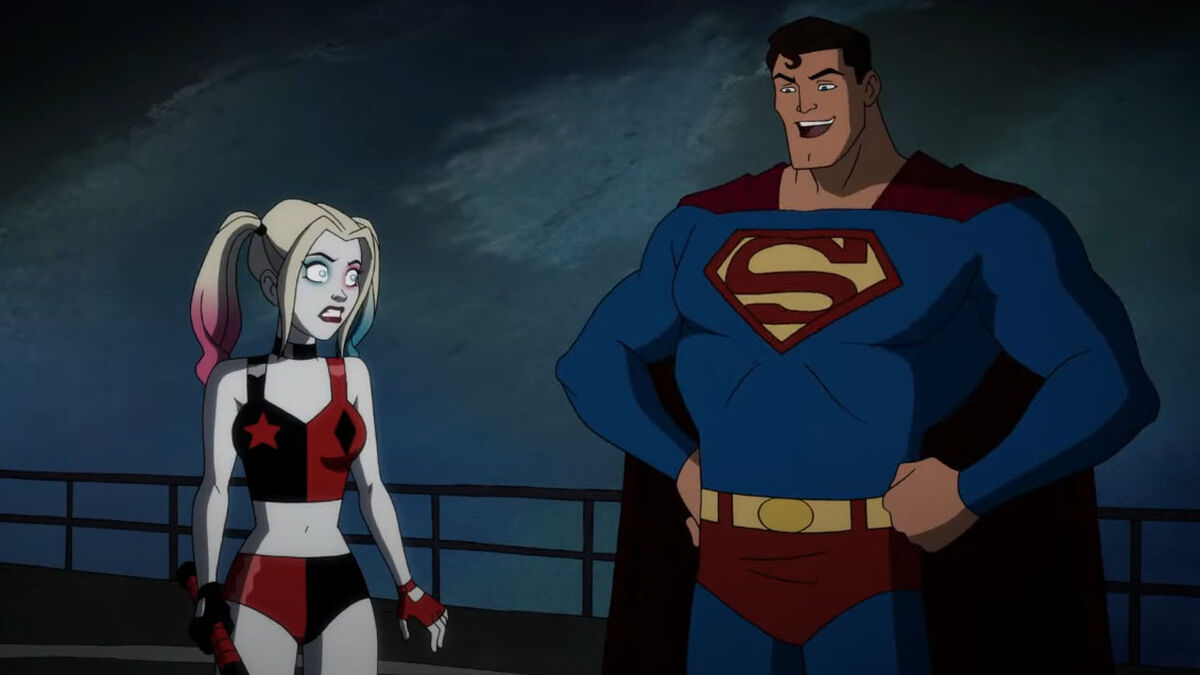
Superman also made a few guest appearances on DC Super Hero Girls, with Max Mittelman voicing a younger incarnation of Superman. More recently, James Wolk voiced Superman for a handful of guest appearances in the adult-aimed Harley Quinn. In this series, Superman is in a steady relationship with Lois Lane (Natalie Morales), but that didn’t stop the Man of Steel from flirting with Harley (Kaley Cuoco) when he was briefly under the influence of Poison Ivy’s powers during the second season.

The new animated series, My Adventures with Superman, splits the focus between Clark Kent/Superman (Jack Quaid) and Lois Lane (Alice Lee) early in their careers at The Daily Planet alongside Jimmy Olsen (Ishmel Sahid). The series’ visual style is also clearly inspired by anime, and focuses on the friendship and occasional rivalry between Lois and Clark in addition to his superheroic duties as the protector of Metropolis. And while the famous duo aren’t initially a couple, it definitely appears like a relationship will unfold between them.
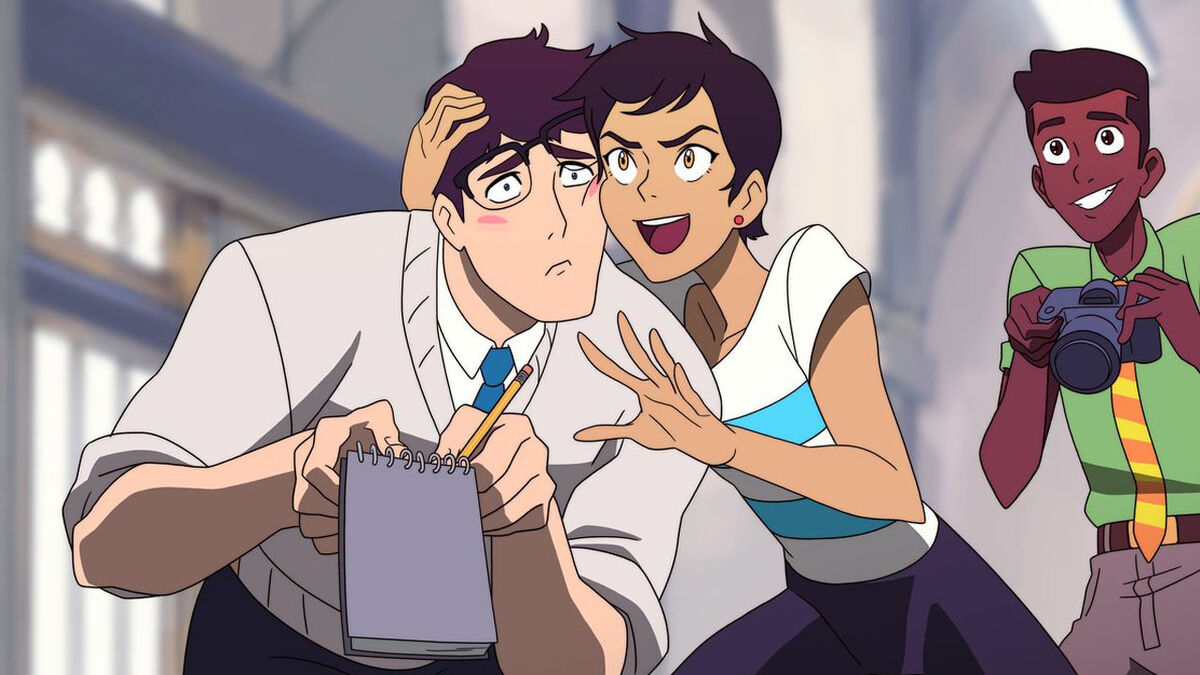
Jeannie Tirado also stars in the series as the voice of Lana Lang, with Kiana Madeira as Kara Zor-El/Supergirl, Darrell Brown as Perry White, Melanie Minichino as Cat Grant, and Vincent Tong as Steve Lombard. Although the early episodes seem to hint at Lex Luthor, Superman’s most famous villain has yet to be confirmed for the show. But the series will feature Brainiac (Michael Emerson), Mr. Mxyzptlk (David Errigo Jr.), Deathstroke (Chris Parnell), Toyman/Winslow Schott (Michael Yurchak), Silver Banshee (Catherine Taber), Parasite (Jake Green), and Heat Wave (Laila Berzins), among others.
The first two episodes of My Adventures with Superman premieres on Adult Swim on July 6, before heading to Max on July 7. And hopefully we’ll get multiple seasons out of Superman’s latest show.
Related New
Related